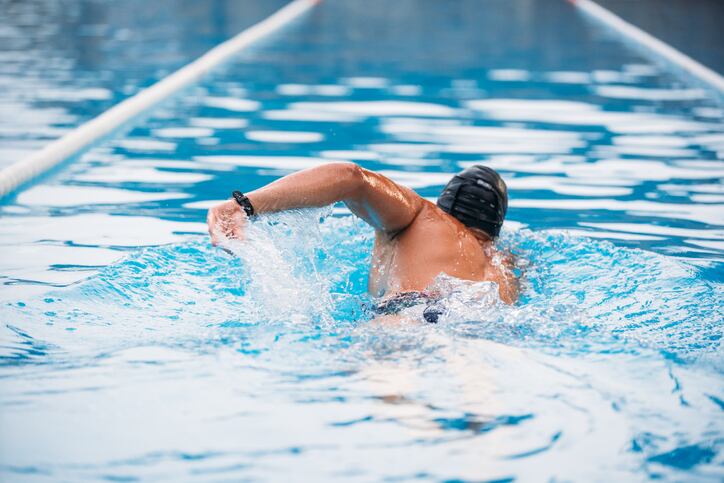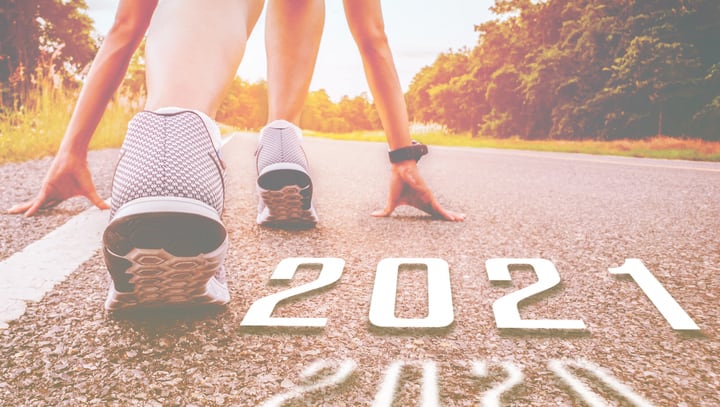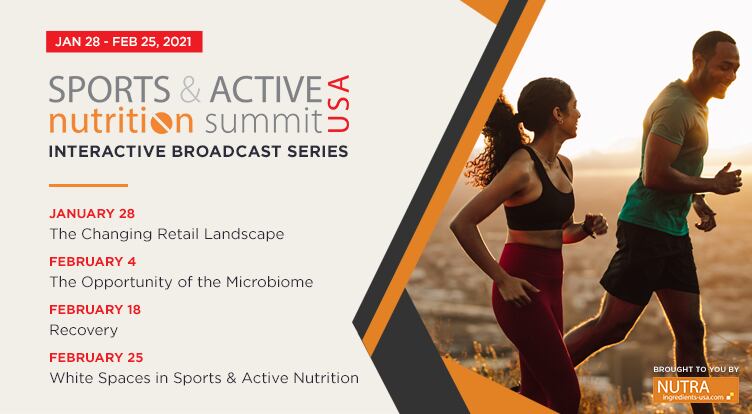The study was published recently in the Journal of the International Society of Sports Nutrition. The researchers are on the staff at California State University Los Angeles.
The study compared the effects of a high carbohydrate-low fat diet with one that was low in carbs and high in fat. The high carb diet consisted of 67% of the calories from carbs, 16% from fat and 16% from protein. The low carb diet numbers were 16%-67%-18%.
The study cohort was eight swimmers, four men and four women, were recruited from a local swim club. The swimmers averaged about 35 years of age and were well relatively well trained, with BMIs averaging about 24 and training frequency of about five hours per week on average.
Do more carbs equate to better efficiency?
The goal of the crossover study was to compare the ‘swimming economy’ of the two fueling strategies. The authors noted that a low carb-high fat diet (in this case not a strictly ‘ketogenic’ diet, which would include only about 5% carbs) is used in a periodic fashion by some athletes to try to improve fat utilization. Athletes may also do some training sessions in a fasting state for the same purpose.
But the researchers also said that one observed effect of a low carb diet is an erosion of movement efficiency. In other words, athletes in this state may require more energy to produce the same amount of work compared to those who have consumed more carbohydrates.
To test whether ‘swimming efficiency’ was improved with the high carb diet the subjects ate one of the two diets for three days prior to the swimming tests. The participants were given diet plans and kitchen scales to enable them to stick to the required macronutrient intakes.
The swimming tests were done in stationary swimming flume (essentially the swimming equivalent of a stationary bicycle). Baseline VO2 Max measurements were taken at the first lab visit. Fro the second and third visits the swimmers arrived in a fasted state, and completed five minute swims at 50%, 60% and 70% of their individual VO2 Max measurements.
“The HCLF diet increased carbohydrate utilization but did not improve swimming economy compared to the LCHF diet. Therefore, a LCHF diet may offer potential benefit for ultra-distance swimmers, who compete in long-duration, low-intensity events during which consuming large quantities of carbohydrate is challenging. Future research should focus on how diet affects swimming economy during long-duration swims where combating fatigue and maintaining swimming economy are important for success in marathon and ultramarathon swimming events,” the authors concluded.
Expert: Diet differences shown best at highest intensities
Dr Susan Kleiner, PhD, a nutritionist who has advised many top flight athletes, noted that the differences between the diets become most apparent at higher intensities, so the relatively moderate intensity approach of this study could be seen as a drawback.
“ The notable differences between low and high carb fall at the higher intensities of exercise. This study was moderate intensity from 50-70% VO2 max,” Kleiner told NutraIngredients-USA.
“Elite athletes race at a minimum 70% even for marathon swims. Recreational athletes will be somewhat slower. But to win you need speed. That requires carbs. This wasn’t tested,” she added.
Kleiner said that other research in this area in other sports has shown a decrease in efficiency with a low carb diet. But those were of longer duration, so it remains to be seen if a similarly longer study in swimming would show the same results, or if swimming is different somehow.
Kleiner also noted that no muscle biopsies were done, which would be the gold standard to confirm muscle glycogen availability. But the authors did measure respiratory exchange ratio, which can reflect energy substrate usage, which is a useful data point.
“In conclusion, this study wouldn’t change my recommendation of consuming adequate carbs to fuel race training, whether long or short distance. Of course I adjust fuel composition based on the goal of the training day/week/month. But we fuel to win,” Kleiner said. “If you train for your enjoyment and well being and have no interest in racing or going fast, and you prefer a low carb diet, then it may not matter.”
Dr. Kleiner will be a featured speaker in NutraIngredients-USA’s upcoming Sports Nutrition Summit 2021. For more information see the link below.
Source: Journal of the International Society of Sports Nutrition
17, Article number: 64 (2020)
Effect of low- and high-carbohydrate diets on swimming economy: a crossover study
Authors: Bestard MA, Rothschild JA, Crocker GH




